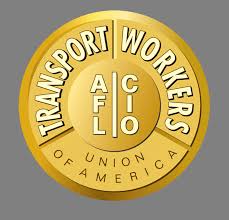

On this day in labor history, the year was 1950.
That was the day 4600 baggage handlers, mechanics and store personnel ended their strike against American Airlines.
The 11-day strike affected airports in 34 cities, crippling 80% of American’s operations.
Transport Workers Union leader Mike Quill demanded wage increases, job-security and guarantees against the subcontracting out of maintenance work.
TWU had been locked into negotiations and mediation for months leading up to the strike at the beginning of March.
In her book, On the Ground: Labor Struggle in the American Airline Industry, Liesl Miller Orenic notes that the strike was an example of cross skill solidarity within the union.
Union baggage handlers were the first to walk out.
Quill hoped to garner support by emphasizing that the planes were improperly maintained.
He demanded that President Truman take over the airlines on the basis that “the planes were unsafe for public transportation.”
Support for the strike remained strong in larger cities.
But in smaller cities, strikers looked to return to work. Miller Orenic adds the strike victory resulted in industry firsts: “A severance package for laid-off workers and a company policy pledging only to subcontract mechanical work that American Airlines employees did not have time to do.”
Though they did not gain wage raises, they did win significant increases in sick leave, three weeks paid vacation after 12 years of service instead of 15, and paid mealtime for night shift workers.
TWU members at PanAM were inspired to strike over similar demands two months later.
The victory at American spurred national mediators to hammer out a settlement in favor of PanAm strikers some 17 hours after the strike was called.
More Episodes
All Episodes>>You may also like
Creat Yourt Podcast In Minutes
- Full-featured podcast site
- Unlimited storage and bandwidth
- Comprehensive podcast stats
- Distribute to Apple Podcasts, Spotify, and more
- Make money with your podcast











